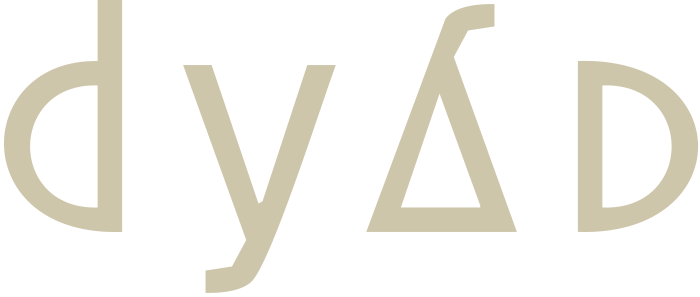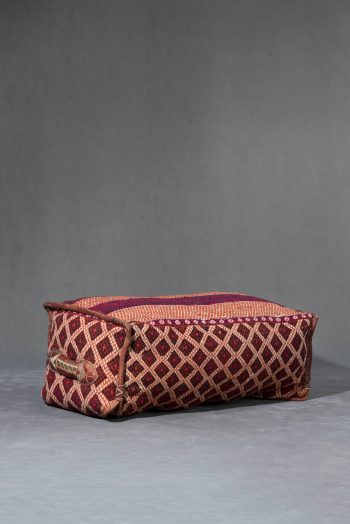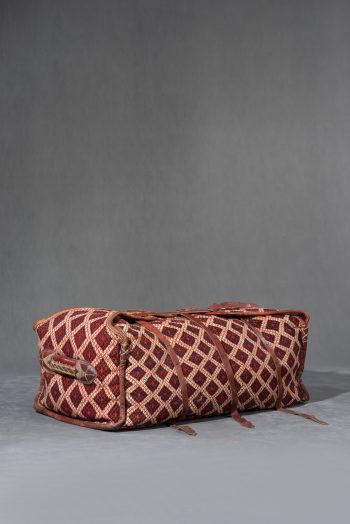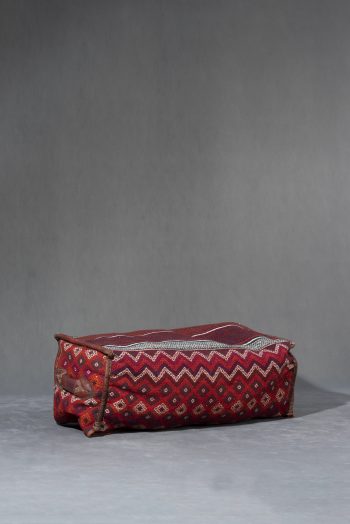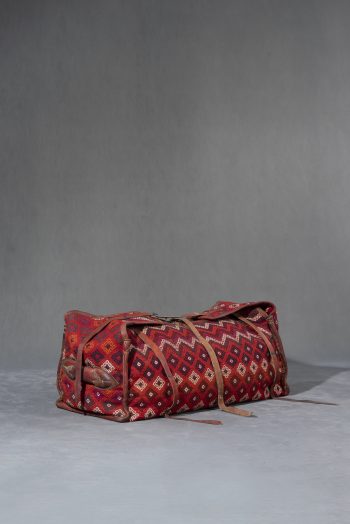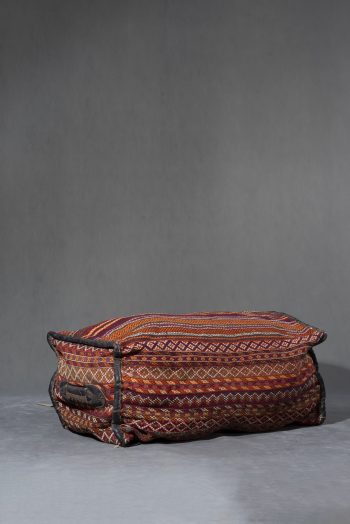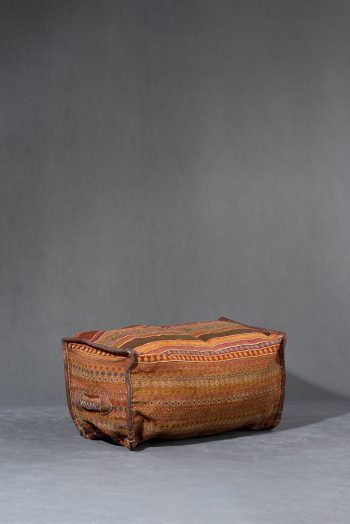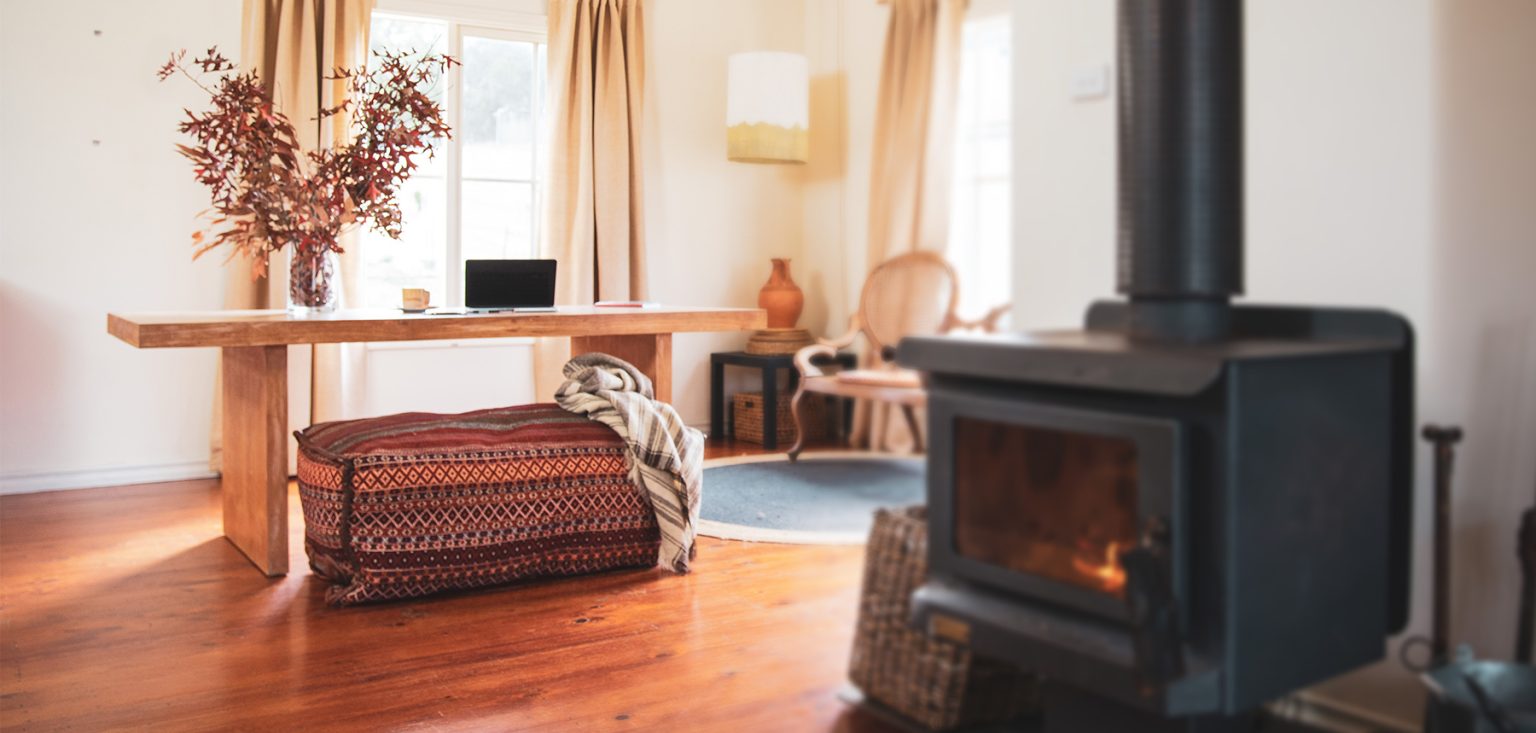
The Qashqai Mafrash: Exploring a Lesser-known Qashqai Textile
In the world of textile artistry, some creations transcend time, capturing the essence of a culture and showcasing the ingenuity of its people. One such masterpiece is the Mafrash, woven by the Qashqai tribes of southern Iran. These captivating woven receptacles offer multiple functions, feature gorgeous colours, display symbolic patterns, and carry an ages-old history. It’s not just the floor weavings of the Qashqai people that captivate the world but also their other stunning textile creations.
Qashqai People and Their Containers
The Qashqai people, a tribal confederation in southern Iran mostly of Turkic origin, predominantly live in Fars province. Despite a shift towards more settled lifestyles, some Qashqai communities still maintain their nomadic pastoral traditions.
Due to their nomadic lifestyle and tent-based living, the Qashqai rely on various textile receptacles. Keeping and transporting food and appliances are crucial for nomadic life, and Qashqai women have addressed this need with remarkable creativity. Using different techniques, they weave a variety of containers that are both practical and visually striking. From Mafrash (blanket boxes) and Chanteh (small bags) to Namakdan (salt bags) and Juval (food storage bags), these items are woven to serve essential functions while showcasing exquisite artistry. For nomadic people migrating between Yeylak (summer pastures in the mountainous region) and Keshlak (winter pastures in lower regions), these weavings are indispensable due to their flexibility.
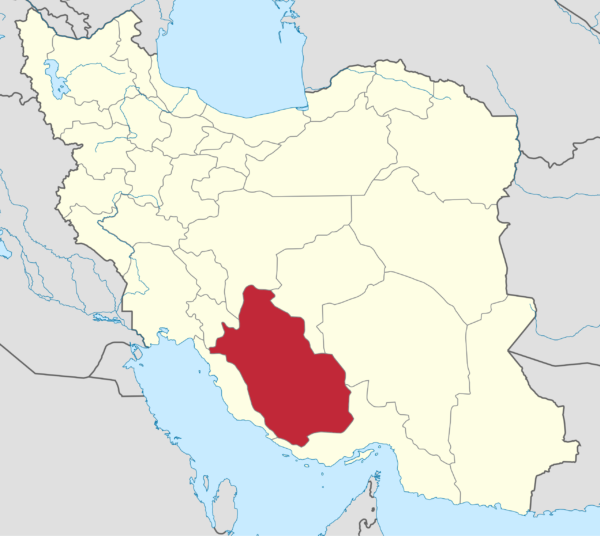
The Uses and Functions of Mafrashs
Among Qashqai containers, Mafrash plays a vital role in daily life. It’s a large, boxy storage bag traditionally used as a portable solution for belongings in tents and during nomadic journeys. Mafrash holds blankets, Kilims, Jijims, clothes, and other textiles not in daily use. When filled with fabrics, Mafrash becomes soft and seat-friendly, making it perfect for placing horizontally along the base of tent walls. This positioning provides comfortable support when sitting and helps warm the tents by keeping cold air out during winter.
Mafrash also holds cultural significance in Qashqai tribes, as it forms part of a nomadic girl’s dowry. Many young girls take pride in weaving their own Mafrash, viewing it as a symbol of their readiness for marriage. Alternatively, families known for their weaving expertise are often commissioned to create dowry Mafrash.
With the decline in animal migration, Mafrashs are now woven with decorative designs and in smaller sizes. As a result, older Mafrashs have become rare and highly valued.

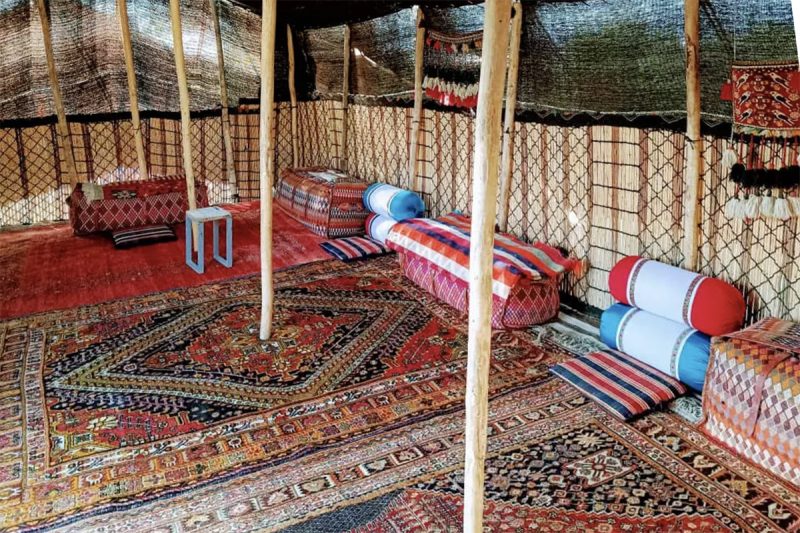
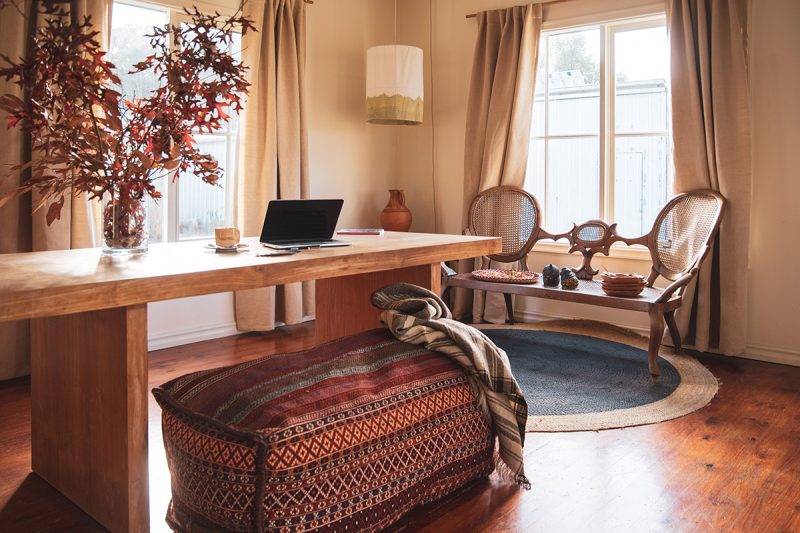
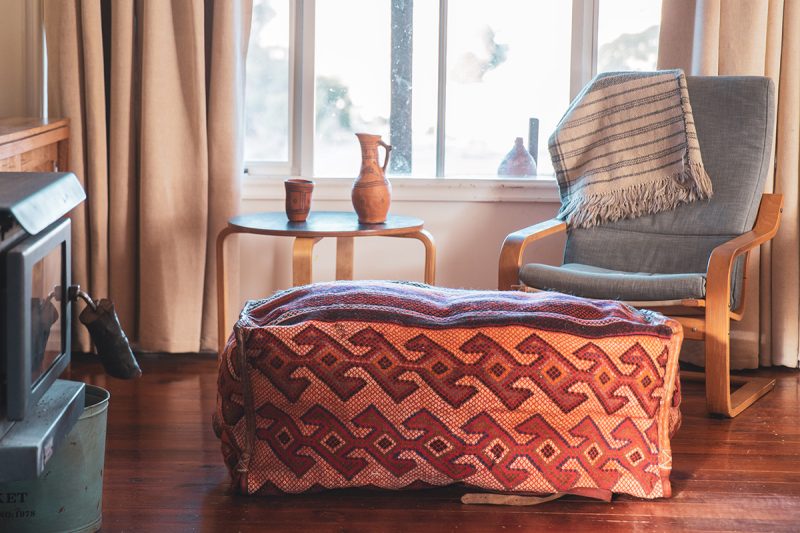
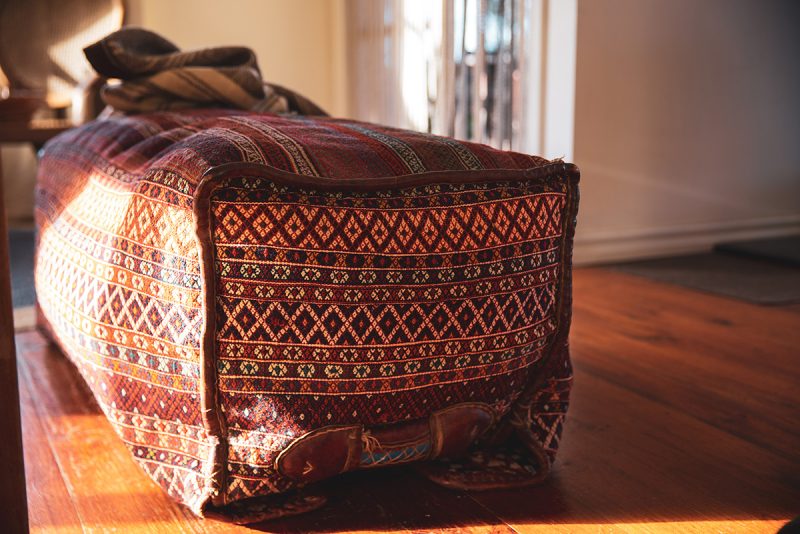
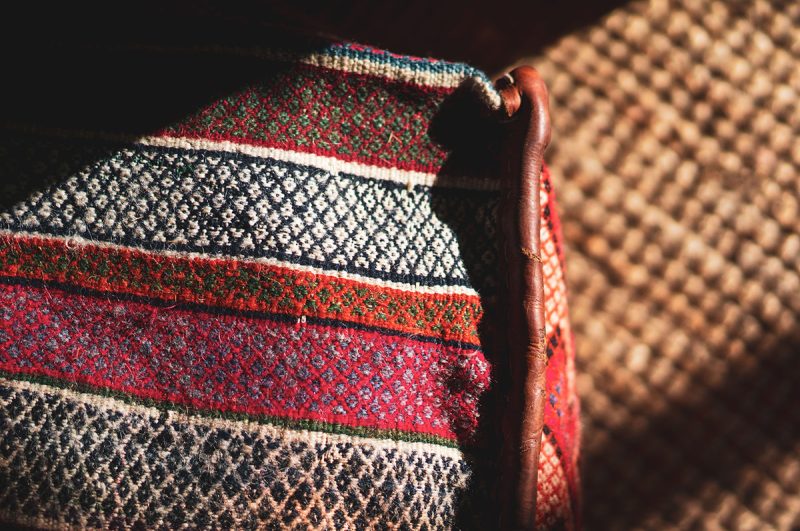
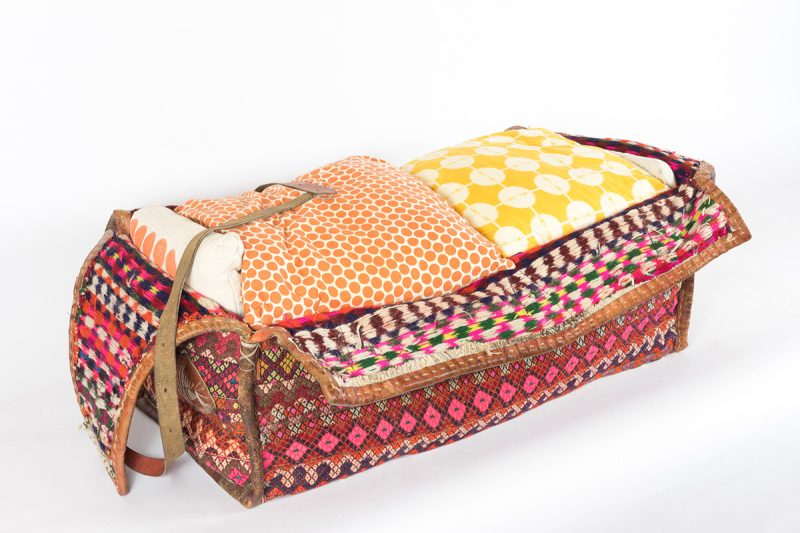
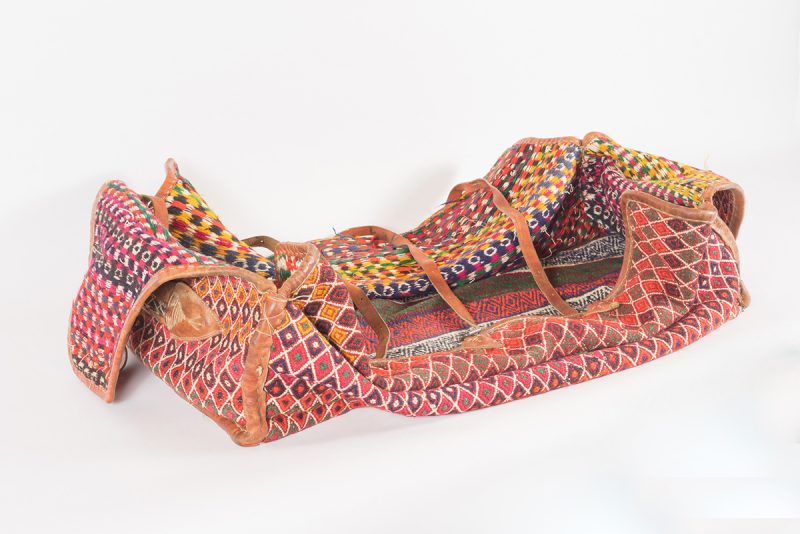
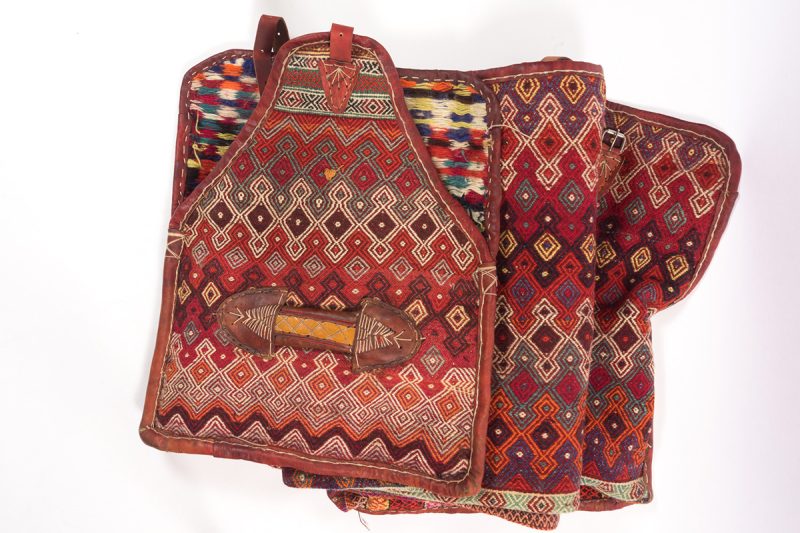
Aesthetics and Design
What makes the Qashqai Mafrash truly remarkable is its aesthetic appeal. Crafted with attention to detail, these textiles feature geometric patterns, symbolic motifs, and vivid colours. Many patterns, like Madakhel and Aghajari, have deep cultural roots. Madakhel motifs, often found on the borders of gabbehs and kilims, are linked to ancient Iranian mythology, symbolising the entrance to the sky or the divine throne. Aghajari motifs depict Dorna (crane) birds, which date back to Iranian pottery from 3000 BC and represent prayers for rain. Other common motifs include Ghofl, Ghaz Ichi, Tagh Taghi, Soama, Jenragh, and Zigzag, all reflecting centuries of tradition. Repetitive geometric motifs in Persian art often convey concepts of order, balance, and harmony, evoking a sense of rhythm and interconnectedness. Some interpretations suggest these patterns symbolise cosmic order and the harmony of the universe.
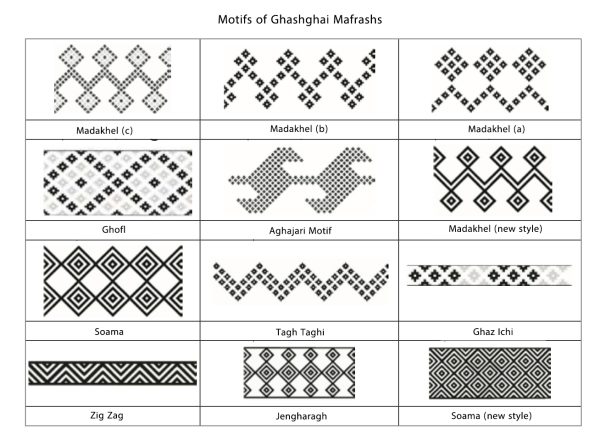
Craftsmanship and Weaving Techniques
Creating a Qashqai Mafrash is a labour-intensive process steeped in tradition. The journey begins with spinning wool into yarn, which is dyed using natural pigments from plants and minerals. Once the yarns are ready, the weaving begins.
The weaving technique is crucial for ensuring durability and lightness. To achieve this, Qashqai artisans favour the flat weave technique for most containers. Mafrashs are woven using a method called Charkhbafi (Wheel Weaving), which combines kilim weaving with supplementary weft substitution. This approach allows weavers to bring their creative visions to life while preserving the Mafrash’s defining characteristics.
In Charkhbafi, motifs are woven with at least two different weft colours. These wefts form both the background and the patterns. For example, if one weft passes over three and under two warp threads, the other weft passes over the opposite threads. As the design progresses, the wefts shift slightly with each new row, creating a beautiful herringbone texture.
Weaving a Mafrash is time-consuming, often taking at least two months to complete. Due to the high cost and effort involved, each nomadic tent typically contains no more than two to four Mafrashs. This dedication highlights the craftsmanship and cultural significance tied to Mafrash weaving.
Modern Appreciation
As the world modernises, the traditional nomadic lifestyle of the Qashqai people has declined. Consequently, fewer individuals continue the ancient craft of Mafrash weaving. Despite these challenges, a growing movement aims to preserve this artistic legacy. Collectors and enthusiasts worldwide increasingly recognise the value and beauty of Qashqai Mafrash. Museums and private collectors actively seek the best pieces, celebrating their historical importance and artistic excellence.
In a world dominated by mass production, the Qashqai Mafrash is a tribute to the beauty of handcrafted artistry and the strength of cultural heritage.
Exploring the Qashqai Mafrash reveals its visual charm, intricate techniques, and deep cultural roots. Through their remarkable artistry, the Qashqai have woven a legacy that transcends time, inviting us to honour the incredible diversity of artistic traditions shaping our world. If you’re captivated by these beautiful creations, explore our exclusive Qashqai Mafrash collection today and bring a piece of this heritage into your life.
Main Reference: Rahmani, A. (2018). Mafrash Weaving in Qashqai Tribe (with emphasis on the structure of the weave). Goljam Journal.
- You cannot add that amount to the cart — we have 1 in stock and you already have 1 in your cart. View cart
